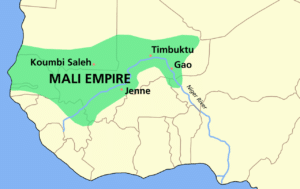Introduction:
Mali, officially the Republic of Mali, is a landlocked country in West Africa. Mali is the eighth-largest country in Africa, with an area of just over 1,240,000 square kilometres (480,000 sq mi). The population of Mali is 19.1 million. 67% of its population was estimated to be under the age of 25 in 2017. Its capital is Bamako. The sovereign state of Mali consists of eight regions and its borders on the north reach deep into the middle of the Sahara Desert, while the country’s southern part, where the majority of inhabitants live, features the Niger and Senegal rivers. The country’s economy centers on agriculture and mining. Some of Mali’s prominent natural resources include gold, being the third largest producer of gold on the African continent, and salt.

Present-day Mali was once part of three West African empires that controlled trans-Saharan trade: the Ghana Empire (for which Ghana is named), the Mali Empire (for which Mali is named), and the Songhai Empire. At its peak in 1300, the Mali Empire covered an area about twice the size of modern-day France and stretched to the west coast of Africa. In the late 19th century, during the Scramble for Africa, France seized control of Mali, making it a part of French Sudan. French Sudan (then known as the Sudanese Republic) joined with Senegal in 1959, achieving independence in 1960 as the Mali Federation. Shortly thereafter, following Senegal’s withdrawal from the federation, the Sudanese Republic declared itself the independent Republic of Mali. After a long period of one-party rule, a coup in 1991 led to the writing of a new constitution and the establishment of Mali as a democratic, multi-party state.

In January 2012, an armed conflict broke out in northern Mali, in which Tuareg rebels took control of a territory in the north, and in April declared the secession of a new state, Azawad. The conflict was complicated by a military coup that took place in March and later fighting between Tuareg and other rebel factions. In response to territorial gains, the French military launched Opération Serval in January 2013. A month later, Malian and French forces recaptured most of the north. Presidential elections were held on 28 July 2013, with a second-round run-off held on 11 August, and legislative elections were held on 24 November and 15 December 2013.

A coup d’etat is currently taking place in Mali. On 18 August 2020, the nation’s president and prime minister were arrested by the military following a mutiny spurred by protests over continuing economic woes and a worsening national security situation, and the following day both resigned.
History:
Rock paintings and carvings indicate that northern Mali has been inhabited since prehistoric times when the Sahara was fertile grassland. Farming took place by 5000 BC and iron was used around 500 BC. Large settlements began to develop in 300 A.D., including Djenne.
